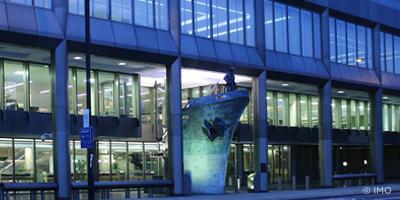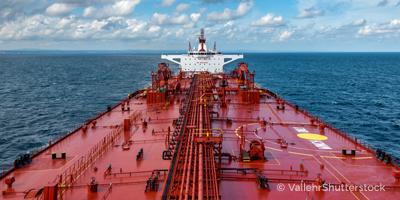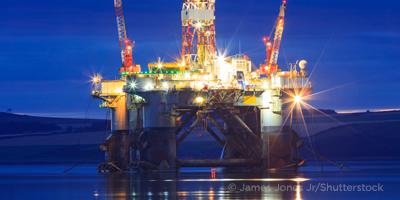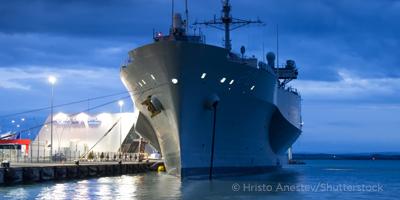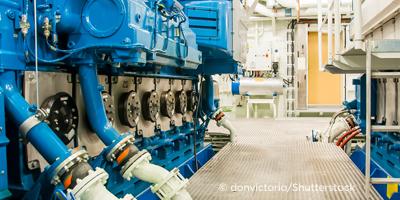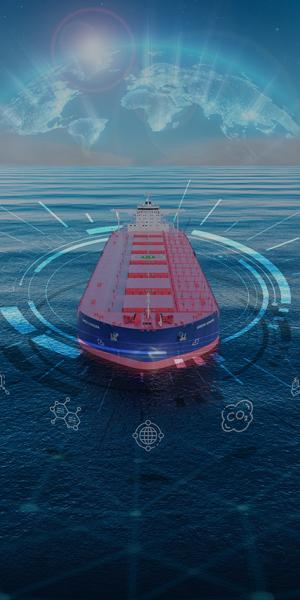Quick Links
- Methanol Overview
- Production
- Transportation and Storage
- Utilization
- Value Chain
- ABS Support
Why methanol?
Methanol is one of many fuels being considered on the maritime industry’s journey to decarbonization. Depending on how it is produced, methanol fuel offers the industry a potential low-carbon or carbon-neutral solution with a straightforward path to near-term adoption than some alternative fuels.
What are the benefits of methanol as a marine fuel?
Using methanol as a marine fuel has the potential to significantly reduce nitrous oxide (NOx), sulfur oxides (SOx) and particular matter (PM) emissions from ships compared to conventional fuels. Carbon emissions can potentially be reduced using carbon capture technology at point sources, like engine exhaust. Reducing life-cycle greenhouse gas (GHG) emissions associated with methanol depends on the feedstock and energy source used for production.
Methanol:
- can be relatively easy to store and transport.
- can take advantage of existing liquid fuel infrastructure, such as storage and bunkering.
- can be burned in existing internal combustion engines with minor modifications.
- can be consumed in fuel cells to generate energy.
- can be a carbon-neutral option when produced using renewable CO2 and green hydrogen.
- can significantly reduce NOx, SOx and PM emissions from typical ship engines.
While methanol offers a relatively mature path to adoption compared to other potential alternative fuels like ammonia and hydrogen, various challenges still need to be accounted for in production, transportation and storage, and utilization.
Methanol, also called methyl alcohol or wood alcohol, is available worldwide and is commonly used as a solvent or as a building block for other commodity chemicals, such as formaldehyde and acetic acid. The existing production infrastructure for methanol makes it an attractive option that can scale to meet increasing near-term demand.
Though methanol offers the potential for reducing emissions from ships, the conventional production process is energy intensive and can have a large carbon footprint, negatively impacting the lifecycle (Well-to-Wake) emissions of methanol as a marine fuel.
Types of Methanol
Much like other alternative fuels, types of methanol can be grouped based on emissions released during production:
- Grey methanol is produced using fossil fuels (coal or natural gas) as feedstock without carbon capture, utilization and storage (CCUS) technology.
- Blue methanol is produced using natural gas as feedstock with CCUS to reduce emissions from production.
- Green methanol is produced either with renewably produced hydrogen and CO2 (e-methanol) or biomass gasification and reformation (bio-methanol).
While green methanol offers the smallest Well-to-Tank (WtT) carbon footprint and is the primary path for methanol to be used as a carbon-neutral fuel to meet the IMO’s emissions reduction goals, the cost associated with scaling the production of green methanol is relatively high.
The transportation and storage of methanol onboard vessels are easier than alternative fuels like LNG, ammonia and hydrogen. As a liquid fuel, methanol requires only minor modifications to existing systems and infrastructure used for conventional marine fuels, mainly concerning the low flash point of methanol.
Primary safety considerations include:
- Methanol tank location
- Methanol protection
- Inerting and venting of a methanol tank
- Spill containment
- Vapor and fire detection
- Fire fighting on board
- Onboard methanol operation safety training
Spills and Leaks
Though methanol has a lower toxicity than ammonia, it is poisonous if ingested in large quantities. Since methanol vapor is heavier than air, it represents an increased risk of inhalation by onboard crew. At high vapor concentrations, methanol can also cause asphyxiation. Methanol should be handled carefully if spilled or leaked in confined spaces or on deck.
Because methanol vapor tends to accumulate at low points, like the bottom of tanks or low pipe points, special attention needs to be given to the placement of ventilation and detection arrangements in spaces where leakage may occur.
However, methanol has a much lesser impact if spilled or leaked into the environment than conventional hydrocarbon fuels. Methanol dissolves readily in water, and only very high concentrations create lethal conditions or any changing effect on the local marine life. A methanol spill would result in limited environmental damage except for releasing carbon into the marine ecosystem.
Fire Safety
Methanol as a liquid does not vaporize rapidly at ambient temperature and pressure. However, in concentrations between 6-36.5% of air, methanol vapor is flammable when introduced to an ignition source. Any methanol manifold, ventilation or pressure/vacuum (P/V) relief valve should have an appropriate clear adjacent area to avoid the introduction of ignition sources or sparks.
Methanol is known for burning with a smokeless, low-light and low-temperature flame that’s nearly invisible in the daylight, hindering flame detection until the fire has spread to adjacent materials. Flame detection equipment such as infrared (IR) cameras, foam extinguishing systems and robust operational procedures should be implemented to protect against methanol fires.
Flammable vapors burn over a methanol pool, and the liquid evaporates due to the heat, contributing to continued burning. One of the most effective ways of fighting a methanol fire is to smother the vapors or to dilute the flammable substances below their flammable limit. Portable dry chemical or CO2 extinguishers can be used for small methanol fires. Water extinguishers may be used for larger volumes of methanol as long as the volume of water is at least four times the size of the methanol pool.
A substantial benefit of using methanol fuel is its ease of use with existing internal combustion engines with minimal modifications.
Internal combustion engines using methanol emit substantially less SOx and PM than conventional fuels because methanol has no sulfur or carbon-to-carbon bonds. Methanol's relatively low adiabatic flame temperature also reduces peak cylinder temperature, limiting NOx formation during combustion. To reach IMO Tier III emission levels, aftertreatment systems may be necessary.
Methanol can also be consumed in fuel cell systems to generate energy. Direct methanol fuel cells consume liquid methanol, making it easy to transport and suitable for portable power with high energy density and stable performance. Reformed methanol fuel cells reform methanol to hydrogen, which has shown higher efficiency and good operation at low temperatures, requiring smaller cell stacks. However, an insulation system may be necessary to manage the temperature for reformed hydrogen.
Methanol is relatively easy to use within existing fuel infrastructure, but it has a much lower energy density than LNG and conventional liquid fuels. As a result, it would require 2.54x more storage volume than traditional fuels. As a result, vessel design would need to account for the increased storage — impacting the space dedicated to the vessel’s primary purpose — or vessels would need to refuel more frequently.
Based on the current technology readiness level and infrastructure availability, methanol offers substantial potential as a low-carbon or carbon-neutral fuel on the journey to decarbonization. Green bio-methanol and e-methanol are especially promising for both sustainability and cost performance. However, adopting methanol to meet IMO goals still has challenges related to Tank-to-Wake (TtW) emissions, safe transportation and storage, and utilization.
ABS understands the industry's challenges as shipowners and operators investigate the various alternative fuel options to reduce emissions. Connect with our sustainability specialists or explore our solutions to learn how we can assist with your next methanol project.
ABS Support
ABS can assist owners, operators, shipbuilders and original equipment manufacturers as they consider the practical implications of using methanol as fuel or transporting methanol. Services offered include:
- Risk Assessment
- Regulatory and statutory compliance
- New technology qualifications
- Life cycle emission and cost analysis of methanol fueled-vessels
- Vessel/fleet benchmarking and identification of improvement options
- EEDI verification and identification of improvement options
- Optimum voyage planning
- Alternative fuel adoption strategy
- Techno-economic studies
- AI-driven emission/cost prediction and benchmarking
- CyberSafetyÒ notations and assessments
- Contingency arrangement planning and investigations






